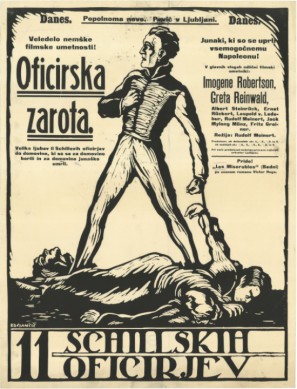
The Eleven Schill Officers is a 1926 German silent historical film directed by Rudolf Meinert and starring Meinert, Gustav Adolf Semler, Grete Reinwald, and Leopold von Ledebur. The film depicts the failed 1809 uprising of Prussian soldiers led by Ferdinand von Schill against the occupying French during the Napoleonic War. The film received poor reviews from critics, but earned enough at the box office to offset its production costs.
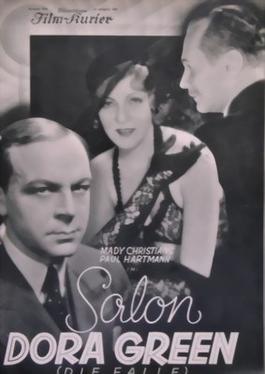
The House of Dora Green is a 1933 German thriller film directed by Henrik Galeen and starring Mady Christians, Paul Hartmann, and Leonard Steckel. It was based on the novel Diplomatische Unterwelt by Hans Rudolf Berndorff. It was the final German film made by Galeen, before being forced into exile following the Nazi Party's takeover of power. In 1937 it was released in the United States.
The Adventurers is a 1926 German silent adventure film directed by Rudolf Walther-Fein and starring Harry Liedtke, Erna Morena and Margarete Schlegel. The art direction was by Jacek Rotmil. The film was based on a novel by Rudolf Herzog. It premiered in Berlin on February 11, 1926.

The Divine Jetta is a 1937 German musical comedy film directed by Erich Waschneck and starring Grethe Weiser, Viktor de Kowa, and Marina von Ditmar.

The Lady with the Mask is a 1928 German silent film directed by Wilhelm Thiele and starring Max Gülstorff, Arlette Marchal and Vladimir Gajdarov. It was shot at the Babelsberg Studios in Berlin. The film's sets were designed by the art director Erich Czerwonski.

The Fate of Renate Langen is a 1931 German drama film directed by Rudolf Walther-Fein and starring Mady Christians, Francis Lederer and Hilde Hildebrand.
Grand Hotel is a 1927 German silent drama film directed by Johannes Guter and starring Mady Christians, Dagny Servaes and Günther Hadank. It was shot at the Babelsberg Studios in Berlin. The film's sets were designed by the art director Erich Czerwonski.

Nanette Makes Everything is a 1926 German silent film directed by Carl Boese and starring Mady Christians, Georg Alexander and Vivian Gibson. It was shot at the Terra Studios in Berlin. The film's sets were designed by the art director Oscar Werndorff.

Dame Care is a 1928 German silent drama film directed by Robert Land and starring Fritz Kortner, Mary Carr and William Dieterle. It is based on the 1887 novel Frau Sorge by Hermann Sudermann. It was shot at the Staaken Studios in Berlin. The film's sets were designed by the art director Robert Neppach. It was distributed by the German branch of First National Pictures.
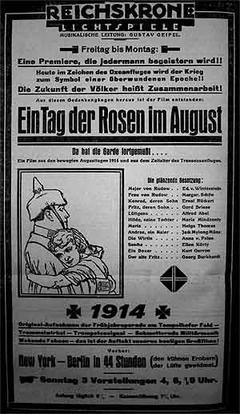
A Day of Roses in August is a 1927 German silent film directed by Max Mack and starring Eduard von Winterstein, Margarete Schön, and Ernst Rückert. It was shot at the Johannisthal Studios in Berlin. The film's sets were designed by the art director Kurt Richter. The film takes place in August 1914 at the beginning of the First World War.
The World Wants To Be Deceived is a 1926 German silent film directed by Peter Paul Felner and starring Harry Liedtke, Georg Alexander and Mady Christians.
Dawn or Red Morning is a 1929 German silent film directed by Wolfgang Neff and Burton George and starring Paul Henckels, Werner Fuetterer and Carl de Vogt.
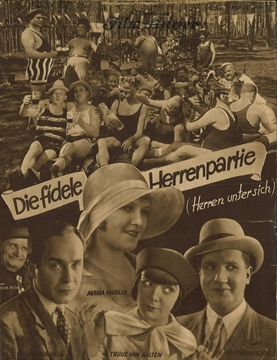
Gentlemen Among Themselves is a 1929 German silent comedy film directed by Rudolf Walther-Fein and starring Hermann Picha, Lydia Potechina and Maria Paudler. It was shot at the Staaken Studios in Berlin. The film's sets were designed by Botho Hoefer and Hans Minzloff.

Three Days of Fear is a 1952 West German comedy crime film directed by Erich Waschneck and starring Rudolf Platte, Camilla Spira and Cornelia Froboess. It was shot at the Göttingen Studios. The film's sets were designed by Hans Jürgen Kiebach and Gabriel Pellon.

Doctor Solm is a 1955 West German drama film directed by Paul May and starring Hans Söhnker, Sybil Werden and Antje Weisgerber.
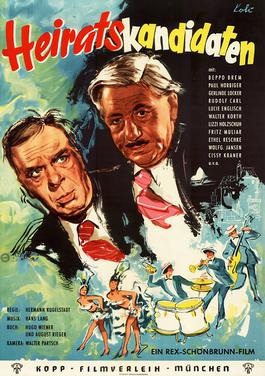
Candidates for Marriage is a 1958 Austrian-West German comedy film directed by Hermann Kugelstadt and starring Beppo Brem, Paul Hörbiger and Gerlinde Locker. It was shot at the Schönbrunn Studios in Vienna and on location around the city. The film's sets were designed by the art director Wolf Witzemann.

At the Strasbourg is a 1934 German comedy film directed by Franz Osten and starring Hans Stüwe, Ursula Grabley, and Anna von Palen.

My Daughter Doesn't Do That is a 1940 German romantic comedy film directed by Hans H. Zerlett and starring Ralph Arthur Roberts, Erika von Thellmann, and Geraldine Katt.
The Devil is a 1918 German silent mystery film directed by E. A. Dupont and starring Max Landa, Gustav Botz, and Tzwetta Tzatschewa.
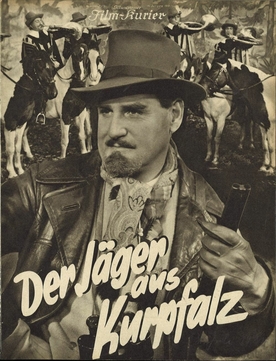
The Hunter from Kurpfalz is a 1933 German comedy film directed by Carl Behr and starring Hans Adalbert Schlettow, Walter Rilla and Fritz Kampers. It was produced by Carl Froelich and shot at the Johannisthal Studios of Tobis Film in Berlin. Location shooting took place around Neustadt in the Palatinate and the wider Rhineland area. The title references the German folk song "Ein Jäger aus Kurpfalz".















